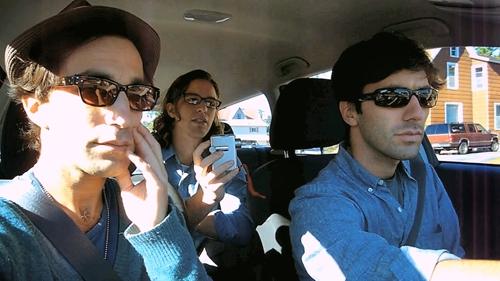Ever since Catfish appeared in the States earlier in the year, debate has been raging about its bona fides. On the face of it an ingenious documentary playing smartly with the potential and pitfalls of social networking and the nature of personal identity in the cyber age, the film has triggered cries of “foul” from a number of critics and viewers. Morgan Spurlock, who made the junk-food odyssey Super Size Me, has called Catfish “the best fake documentary I’ve ever seen”.
 By accident or design, Catfish has also managed to make itself critic-proof, at least in as much as the structure of the film makes it very difficult to write about without giving away the whole point of the exercise. The story begins to roll when Nev receives a painting through the mail from an eight-year-old girl called Abby, who lives in Ishpeming in rural Michigan. The painting is based on one of Nev's dance photographs. Nev is flattered and intrigued enough to begin an online friendship with Abby and her web-chaperone mother Angela (whom a later painting by Abby will depict as a vision of serene loveliness). Abby, Angela tells them, is a juvenile art prodigy whose paintings are fetching thousands of dollars and are being exhibited in any number of local galleries. Meanwhile bundles of them keep turning up in the mail at the Supermarché office (pictured below).
By accident or design, Catfish has also managed to make itself critic-proof, at least in as much as the structure of the film makes it very difficult to write about without giving away the whole point of the exercise. The story begins to roll when Nev receives a painting through the mail from an eight-year-old girl called Abby, who lives in Ishpeming in rural Michigan. The painting is based on one of Nev's dance photographs. Nev is flattered and intrigued enough to begin an online friendship with Abby and her web-chaperone mother Angela (whom a later painting by Abby will depict as a vision of serene loveliness). Abby, Angela tells them, is a juvenile art prodigy whose paintings are fetching thousands of dollars and are being exhibited in any number of local galleries. Meanwhile bundles of them keep turning up in the mail at the Supermarché office (pictured below). When Nev's attempts to fix up a real-life meeting with Megan are met with a string of evasions, the film-making trio start to grow uneasy. They decide they'll pay an unannounced visit to Abby, Megan and co, since they have to head up in that direction for another assignment anyway. They pile into a car bristling with iPods, iPads, iPhones and Macbooks, and though for a moment it looks as if they may be straying into some kind of Michigan Chainsaw Massacre frightmare, what they discover turns out to be far more unpredictable and troubling.
When Nev's attempts to fix up a real-life meeting with Megan are met with a string of evasions, the film-making trio start to grow uneasy. They decide they'll pay an unannounced visit to Abby, Megan and co, since they have to head up in that direction for another assignment anyway. They pile into a car bristling with iPods, iPads, iPhones and Macbooks, and though for a moment it looks as if they may be straying into some kind of Michigan Chainsaw Massacre frightmare, what they discover turns out to be far more unpredictable and troubling.- Catfish is on release from Friday, 17 December













Add comment